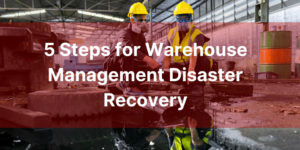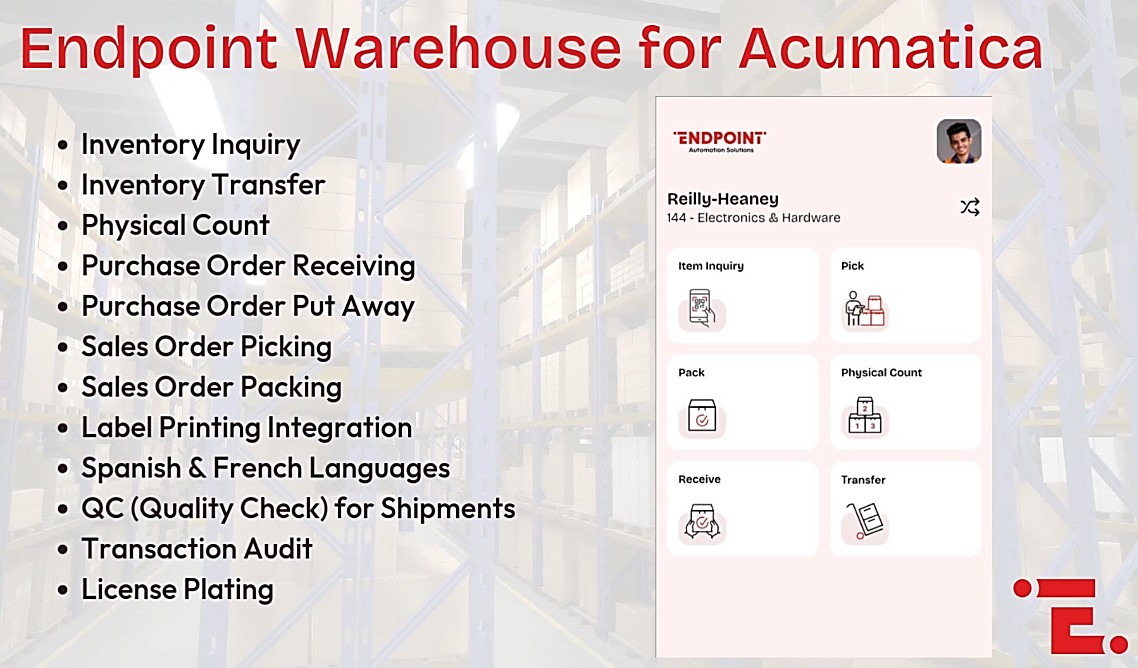March 5th 2025 10:26:27 AM
5 Steps for Warehouse Management Disaster Recovery
August 8th 2024 08:44:26 AM
 Do you have a disaster recovery plan, or are you crossing your fingers and hoping it will never happen? Ignoring potential disasters could be devastating to your business. When a major disaster occurs, 25% of businesses never open their doors again. Having a disaster recovery plan as a part of your warehouse management is like having insurance. You hope that you will never need it, but if you do, it is a lifeline.
Do you have a disaster recovery plan, or are you crossing your fingers and hoping it will never happen? Ignoring potential disasters could be devastating to your business. When a major disaster occurs, 25% of businesses never open their doors again. Having a disaster recovery plan as a part of your warehouse management is like having insurance. You hope that you will never need it, but if you do, it is a lifeline.
Warehouse Management Disaster Preparation Techniques
We can’t control many disasters, but we still need to plan for them. How do we lessen the damage? How do we restore normalcy after the event? With the right preparation, potential dangers can be minimized, risks can be anticipated, and sometimes disaster can be prevented. Warehouse management solutions can be put in place to prevent the worst from happening. Most companies are committed to safety in everyday operations, but you also need to prepare for the unexpected. You must be prepared with a response and recovery plan which includes these steps.
1. Planning
“If you fail to plan, you are planning to fail.”—Ben Franklin
The best thing to do first is to recognize that you need a plan. Make disaster preparedness a priority in your facility. If you already have a plan, have you looked at it recently? Your plan should include:
- Consider every type of natural or manmade hazard and identify its potential impact. Examine ways to prevent these hazards and reduce the risks. Create different plans for different types of emergencies.
- Don’t forget to collect information about your supply chain and identify threats that could disrupt it. Review your suppliers’ disaster recovery plans and be prepared with alternative backup suppliers.
- Have a warehouse evacuation plan. Know safety precautions for exiting the building, evaluate how to get messages on the status of the emergency to employees, and identify a location of a common safe place.
- Know who does what. Many roles and responsibilities are assigned during a disruptive event that may be outside the scope of normal warehouse operations. Although each event is different—depending on the scope, duration, and impact—general responsibilities should be outlined and contacts documented to help shorten response time.
- Prepare a list of which materials or machines, if any, should be evacuated.
- Know your insurance policy. Do you have coverage for your machinery, equipment, and other large expenses?
- Put a communication plan in place. You will need to communicate with emergency services, communities, media, your supply chain, customers, stakeholders, and relatives.
2. Implementation
Ensure you have the physical, financial, and labor resources to support your warehouse management procedures. These resources, or arrangements for them, should be in place before an incident occurs.
Necessary physical resources will include equipment for disaster mitigation as well as the equipment and logistics required for a rapid response. Before an emergency hits, make sure that your system has real-time redundancy and that the rebuild or restoration of all computers will be quick and easy. Leverage cloud-based offsite storage options to help with this transition.
When a disaster occurs, you will need to procure emergency funding to handle it. Be sure to consider all costs—backup location, new equipment, accommodations for employees, temporary labor, and loss of business continuity and assets. The bigger your safety net, the less likely you are to face major setbacks following an emergency.
When something extraordinary happens, you may need additional personnel to handle the response and implement the recovery plan. Small companies and those with facilities in remote locations, in particular, are unlikely to have the resources to handle an emergency. One option is to use temporary agencies to help you fill vacancies. It can also be useful to establish remote access for employees before disaster strikes.
3. Testing
A plan on paper won’t be effective unless you test it. Conduct exercises to evaluate the plan’s effectiveness based on realistic scenarios. Include warehouse operators who will have the best ability to assess their systems, identify needs, and execute work needed to restore services. Typically, many questions will arise that most would not have considered without the stimulus of the exercise.
4. Program Improvement
Disaster plans should be reviewed to adapt to changing technology, operations, and equipment. Regularly review your plan to make changes, such as updating and verifying emergency contacts.
5. Recovery
Recovering from a disaster is often a long-term process. But with the right advance preparation, you can reduce the time it takes and resume business as usual. Using mobile cloud software can help you recover more quickly when the unexpected happens. Scanco offers cloud-based or local configurations for Scanco Warehouse. We are experts in Sage 100 warehouse management automation. Contact us to learn more.













